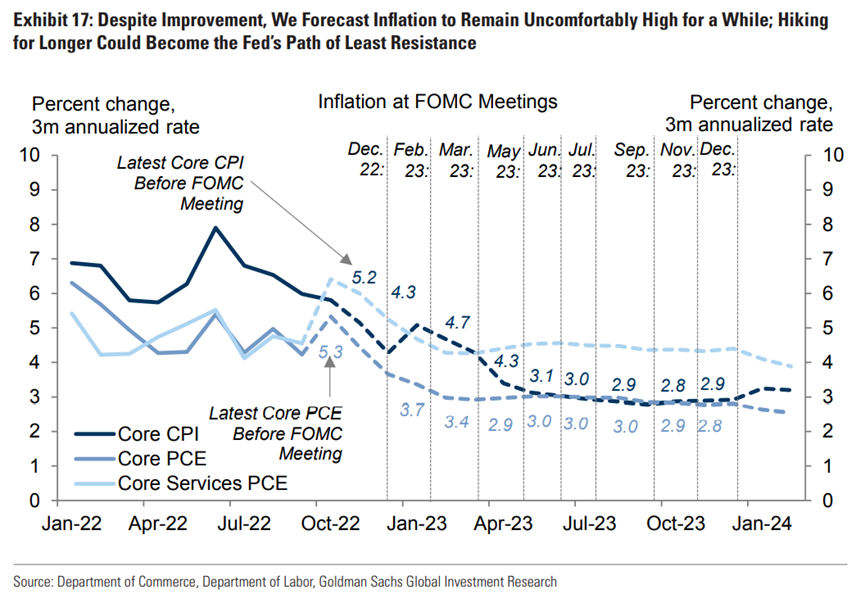Minutes of the November meeting published
Last Thursday, the Federal Reserve released the minutes of its highly anticipated November monetary policy meeting.
The minutes indicate that "most participants believe that the right time to slow the pace of interest rate increases may come soon. "

Image source: CNBC
This statement basically implies that the Fed will limit the December rate hike to 50 basis points.
At the same time, participants said, “Given the uncertain lag in monetary policy, a slower pace of rate increases would better allow the FOMC to assess progress toward its goals and conclude that - the ultimate peak federal funds rate will be somewhat higher than previously projected.
In other words, the Fed's current round of rate hikes has entered a new, slower but higher and longer phase.
The Fed has acknowledged the lag in monetary policy and made clear that the effects of previous rate hikes have not yet been fully transmitted to the market and that this lag is "uncertain."
As a result, the Fed has decided to slow the pace of rate hikes to better monitor the effect of rate hikes on containing inflation.
Rate hikes will end in 2023
What makes the market sit up and take notice is the fact that the Fed explicitly addressed the risk of a recession for the first time in the minutes - the probability of a U.S. recession in 2023 is estimated at around 50%.
This is the first similar warning from the Fed since it began raising interest rates in March, a warning that has also reignited the market's vision of rate cuts starting in 2023.

Image source: CNBC
Following the release of the minutes, the 10-year U.S. bond yield fell back to 3.663%; the probability of a 50 basis point rate hike in December also rose to 75.8%.

Image source: CME FedWatch Tool
Many people believe that the Fed's "hawkishness" may have peaked, and it is widely expected that the current rate hike cycle will end in 2023.
A recent report also supports this prediction.

Image credit: Goldman Sachs
According to the Goldman Sachs forecast, the index of CPI will decline to below 5% by most interest rate meetings next year.
Once inflation proves consistently low next year, the Fed's suspension of rate hikes is just around the corner.
What does the future path look like?
Note that the November FOMC Meeting preceded the October release of CPI.
With CPI cooling more than expected last month, the latest views of Fed officials may be more informative about the future course of policy.
However, it is also clear from recent public remarks that most Fed officials take a view similar to that in the minutes - the pace of rate increases can be slowed, but there is still a need to tighten policy further.
Many officials have set the target rate at about 5%. That means rates will peak next March if the Fed raises rates by 50 basis points in December, as expected.
At that point, the Fed funds rate will be 5.0% - 5.25% and will remain in that range for some time.
According to Wind’s latest forecast, the eight interest rate meetings in 2023 (February, March, May, June, July, September, November, and December) will follow the following path.
A 50 basis point rate hike in February.
25 bps rate hike in March (pause in rate hikes thereafter).
25 bps rate cut in December (first transition to rate cuts)
The Federal Reserve will hold its last monetary policy meeting of the year on December 13-14, and a 50 basis point rate hike can be considered as an absolute certainty.
Once the Fed cuts rates for the first time, from 75 basis points to 50 basis points, mortgage rates are also expected to decline somewhat at that time.
Articles Sharing:
Will Powell become the second Volcker?
When Record-high Home Prices Meet Crazy Interest Rate Hikes
Statement:
This article was edited and compiled by AAA LENDINGS, the copyright belongs to AAA LENDINGS website, it doesn't represent the position of this website, and is not allowed to be reprinted without permission.
阅读原文 阅读 569



